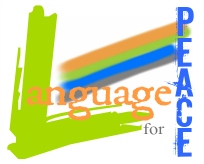When most people think of peace education, they think of talking about peace and justice issues in class. Many language educators try to integrate peace education in this way and seek materials and curriculum that focus on global justice. TESOL International conferences have featured many examples and there is even a special interest group devoted to social justice related issues.
In her article Sorry… It’s Global Justice Again, Linda Ruas describes her efforts to bring global justice topics into her English class. She emphasises that talking about justice doesn’t need to be something to fear.
Ruas highlights that meaningful content engages learners more fully, which in turn increases language learning. She points out that English teachers “cannot teach language with no content at all, and many materials simply present the socially acceptable face of western materialism, enforced beauty and celebrities.” Global justice issues provide an alternative that proves to be relevant and interesting for many of her learners.
While this may be one of the easiest aspects of peace education, it can never be only discussion topics. Education methods, communication with learners, creating a peaceable classroom, implementing restorative justice in classroom discipline, collaborating with other educators, and working to transform education systems are all just as important as discussion topics, if not more. It’s not so much the “what” as the “how,” “who” and “why” in peace education.
Still, helping language learners discuss issues of global justice provides an opportunity for sharing opinions and learning from others in the classroom. It may even lead to students taking action outside of the class to build awareness and make positive change in their communities. If educators have the flexibility to engage learners in these topics, it’s worth a try.

I have been struggling with this idea because I want to find out how to have these discussions without stirring up hatred for nations that have carried out injustices on their subjects or on other countries. For example, in South Korea, there is already bad feelings towards Japan and China because of the many historical wrongs. How can we talk truthfully about what has happened historically and what is happening now and explore the pain it has caused without necessarily painting those who have aided injustice as evil ‘enemies’? I know in my head that there must be ways to do this, but practically I am not sure how to do it. I don’t think we should ever sugarcoat truth, but I also don’t think that we should be accidental instigators of hatred. How to avoid both is something I’m still thinking hard about.
LikeLiked by 1 person
Posted by Abby | May 4, 2015, 1:04 pmI agree this is a particular challenge with global issues. From a peace education perspective, we want to ensure our learners experience peace in the classroom, although that may not mean always agreeing or always avoiding difficult subjects. It’s one area where there are more resources needed!
LikeLike
Posted by clwoelk | May 13, 2015, 3:37 pm